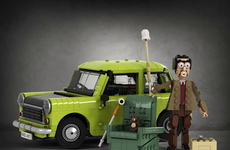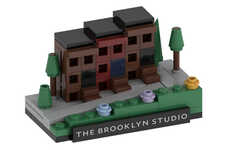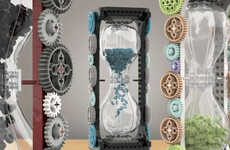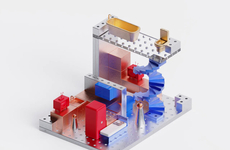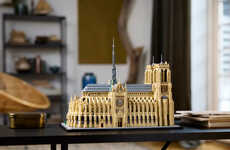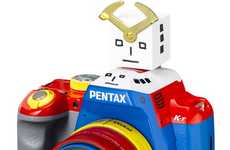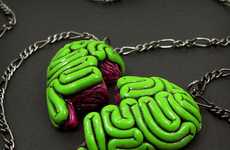
James May's Lego House Meets a Destructive End (Update)
Michael Hines — December 22, 2009 — Life-Stages
James May decided the world needed a Lego house. The world decided that there wasn’t any room for this architectural wonder. The wine vineyard that the house sat on needed the land back to harvest their grapes so May had to become an instant real estate agent.
May failed in his attempt to find a new home for the Lego house and it was subsequently destroyed. LegoLand wouldn’t take it because May didn’t ask them for help when he built it and there was nobody else interested in a two story Lego house.
The Lego house deserved an end devoid of rubber hammers. It was incredibly creative and inspiring, but in the end the world just wasn’t ready for it.
May failed in his attempt to find a new home for the Lego house and it was subsequently destroyed. LegoLand wouldn’t take it because May didn’t ask them for help when he built it and there was nobody else interested in a two story Lego house.
The Lego house deserved an end devoid of rubber hammers. It was incredibly creative and inspiring, but in the end the world just wasn’t ready for it.
Trend Themes
1. Architectural Wonder - The trend of creating innovative and awe-inspiring architectural structures using unconventional materials like LEGO bricks provides opportunities for disruptive innovation in the construction industry.
2. Real Estate Innovation - The trend of unconventional and unique real estate properties, such as a LEGO house, opens up new opportunities for disruptive innovation in the real estate market, including niche property development and marketing strategies.
3. Creative Destruction - The trend of destroying innovative creations like the LEGO house can spur disruptive innovation opportunities in the areas of sustainable deconstruction technologies or repurposing discarded architectural structures for new purposes.
Industry Implications
1. Construction - The construction industry has a disruptive innovation opportunity in exploring the use of unconventional materials, like LEGO bricks, to create unique and sustainable architectural structures.
2. Real Estate - The real estate industry can explore disruptive innovation opportunities by embracing unconventional and unique properties, such as a LEGO house, to cater to niche markets and attract unconventional buyers and investors.
3. Sustainable Technologies - The trend of destroying innovative creations like the LEGO house highlights the need for disruptive innovation in sustainable deconstruction technologies to minimize environmental impact and maximize resource efficiency.
5.9
Score
Popularity
Activity
Freshness

